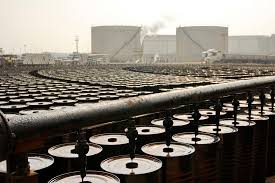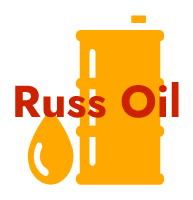
Knowing the production process of bitumen is very important especially for those working with the product
The Origin of Bitumen: Crude Oil
Extraction of Crude Oil
The journey of bitumen begins with the extraction of crude oil from the earth. Crude oil is found in underground reservoirs, often located deep beneath the earth’s surface or beneath the ocean floor. The extraction process involves drilling wells into these reservoirs and pumping the oil to the surface. This crude oil is a raw mixture of hydrocarbons and other compounds, which need to be refined to produce various petroleum products, including bitumen.
Refining Crude Oil
Once extracted, crude oil is transported to refineries, where it undergoes a series of processes to separate and purify its components. The refining process involves several steps:
- Distillation: The crude oil is heated and fed into a distillation column. As it heats up, the various components of the crude oil vaporize at different temperatures. The lighter fractions, such as gasoline and diesel, rise to the top of the column, while the heavier fractions, including bitumen, settle at the bottom.
- Vacuum Distillation: The heavy fractions undergo further distillation under reduced pressure (vacuum distillation). This process lowers the boiling points of the components, allowing them to be separated without decomposing. Bitumen, being one of the heaviest fractions, is collected at the bottom of the vacuum distillation column.
- De-asphalting: In some refineries, the heavy fractions are subjected to a de-asphalting process to remove asphaltenes and other impurities, resulting in a higher-quality bitumen.
Processing Bitumen
Air Blowing
To improve the properties of bitumen, such as its viscosity and temperature susceptibility, it undergoes an air blowing process. In this process, hot air is blown through the bitumen at high temperatures. This causes a reaction between the oxygen in the air and the bitumen, increasing its molecular weight and making it more suitable for use in road construction and roofing applications.
Blending
Bitumen can also be blended with other materials to modify its properties. For example, polymers can be added to improve its elasticity and durability, creating polymer-modified bitumen (PMB). This type of bitumen is particularly useful for applications requiring enhanced performance, such as high-stress roads and heavy-duty pavements.
From Bitumen to Asphalt
Mixing with Aggregates
The final step in the production process of bitumen is its transformation into asphalt. Asphalt is produced by mixing bitumen with aggregates such as crushed stone, sand, and gravel. The aggregates provide strength and stability to the asphalt, while the bitumen acts as a binder, holding the mixture together.
The mixing process can be done in several ways:
- Hot Mix Asphalt (HMA): In this method, the aggregates are heated to remove moisture and then mixed with hot bitumen. This type of asphalt is commonly used for road construction and is known for its durability and strength.
- Warm Mix Asphalt (WMA): This method involves mixing the aggregates with bitumen at lower temperatures compared to HMA. WMA offers several advantages, including reduced energy consumption, lower emissions, and improved workability.
- Cold Mix Asphalt (CMA): In this method, the aggregates are mixed with emulsified bitumen at ambient temperatures. CMA is typically used for temporary repairs and minor roadworks, as it is less durable than HMA and WMA.
Laying and Compaction
Once the asphalt mixture is prepared, it is transported to the construction site, where it is laid and compacted to form a smooth, durable surface. The laying process involves spreading the asphalt mixture evenly over the prepared base using specialized paving machines. The asphalt is then compacted using rollers to remove air pockets and achieve the desired density and strength.
Quality Control and Testing
Throughout the production process of bitumen and asphalt, quality control and testing are essential to ensure that the final product meets the required standards and specifications. Tests are conducted to assess various properties, such as viscosity, penetration, softening point, and adhesion. These tests help to ensure that the bitumen and asphalt will perform effectively in their intended applications, providing long-lasting and reliable results.
Environmental Considerations
The production of bitumen and asphalt has environmental implications, including the consumption of natural resources, energy use, and emissions. To mitigate these impacts, the industry is continually exploring ways to improve sustainability. This includes the development of recycling technologies, such as reclaimed asphalt pavement (RAP), which involves reusing old asphalt to produce new mixtures. Additionally, the use of warm mix asphalt (WMA) and other innovative techniques helps to reduce energy consumption and emissions during production.
Conclusion
The production process of bitumen, from crude oil to asphalt, is a complex and multi-step procedure that transforms raw materials into a versatile and essential construction product. By understanding this process, we can appreciate the value and applications of bitumen in modern infrastructure. From its extraction as crude oil to its final use in road construction and roofing, bitumen plays a crucial role in our daily lives, providing durable and reliable solutions for various construction needs

